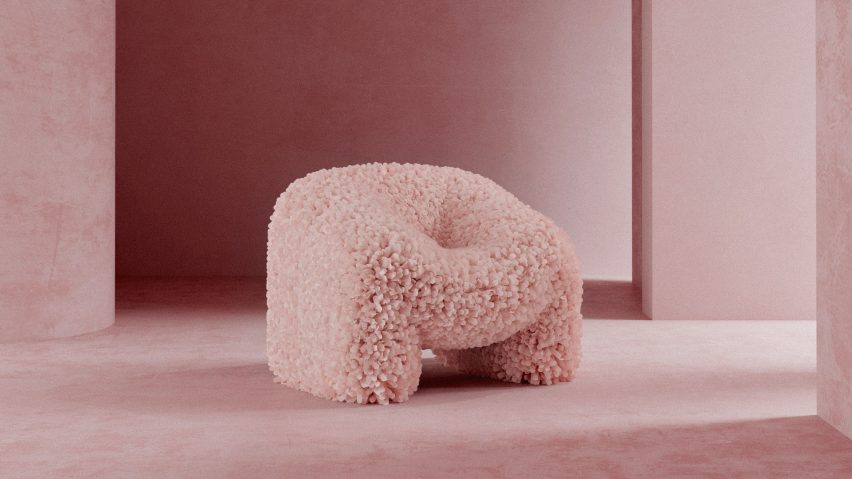
Andrés Reisinger turns Insta-famous CGI render into real chair
After his 3D rendering of a cloud-like armchair went viral on social media last year, Argentinian designer Andrés Reisinger has made the Hortensia chair a reality with the help of 20,000 fabric petals.
Reisinger, who works primarily with CGI, first posted the bulbous, light pink rendering on Instagram in July of 2018.
Since then, it has accumulated thousands of likes and been shared in design magazines alongside real furniture, prompting three orders for a non-existent chair.
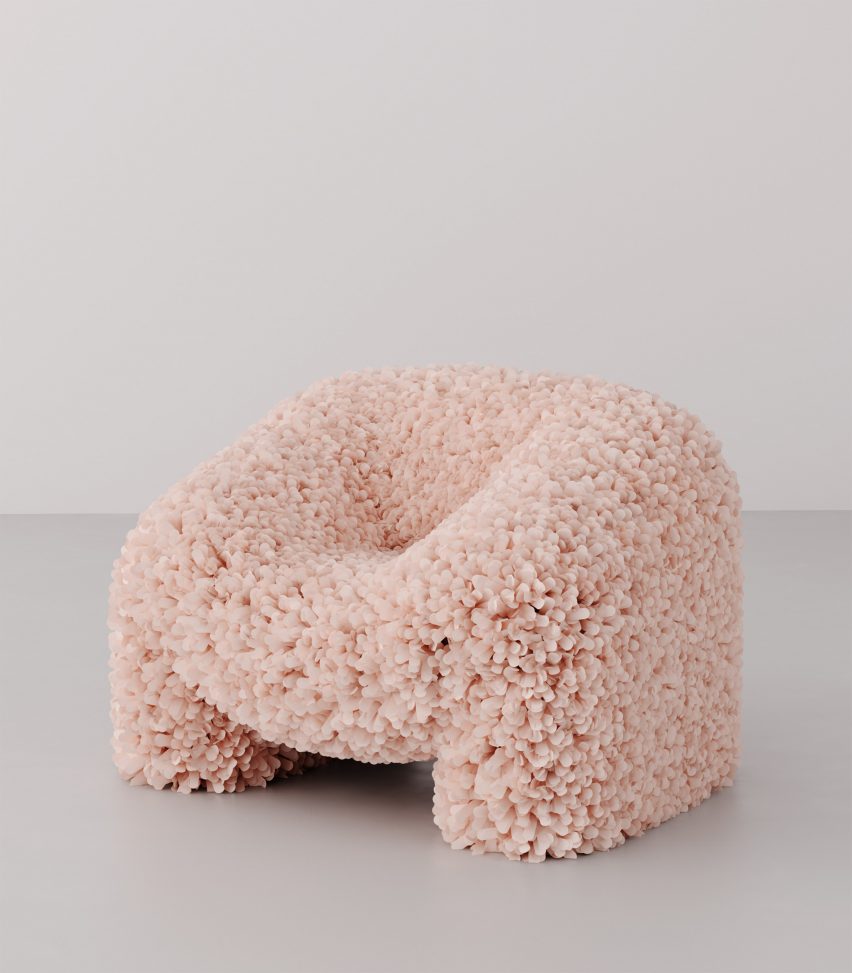
Now, after a year of research and development, the first real version of the Hortensia chair is on display at the Montoya gallery in Barcelona.
"I have been working with 3D softwares for more than 10 years now," Reisinger told Dezeen. "When I reached that goal in my digital work, I knew that my next challenge was to stop imagining and really start building the world as I see it."
"I stumble on all sorts of problems and roadblocks when working with the physical world," he continued. "That's something that empowers my process, that asks for my attention and improvisation."
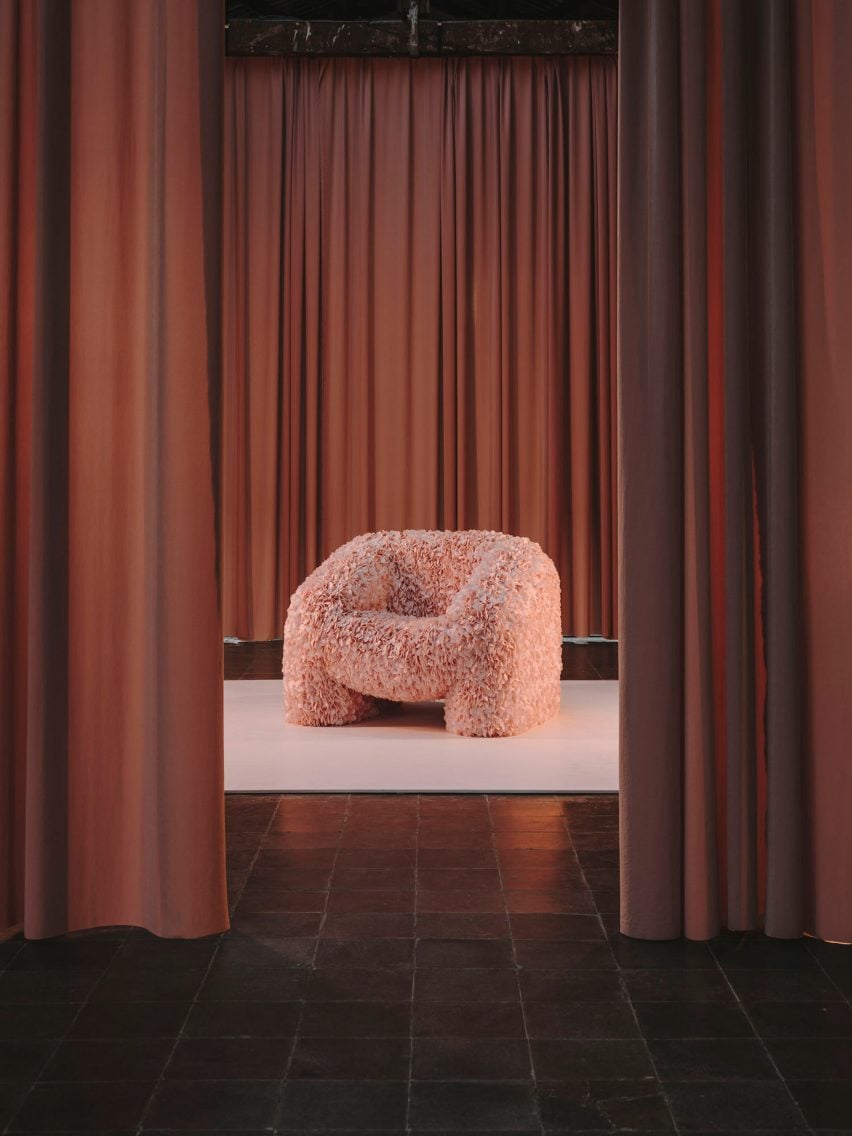
The primary challenge when it came to this particular project was mimicking the hyper-tactile, almost fluffy exterior which is meant to evoke the hortensia or hydrangea flower that gives the chair its name.
It took Reisinger six months to find collaborators that were convinced that this particular texture could be replicated in real life.
"I contacted lots of different production teams and manufacturing partners, but nobody was feeling confident about achieving the same look as the renders," he remembered.
"Then I found Júlia Esqué, who is a product designer that focuses on textiles, and together we created a completely new production process in order to make the chair."
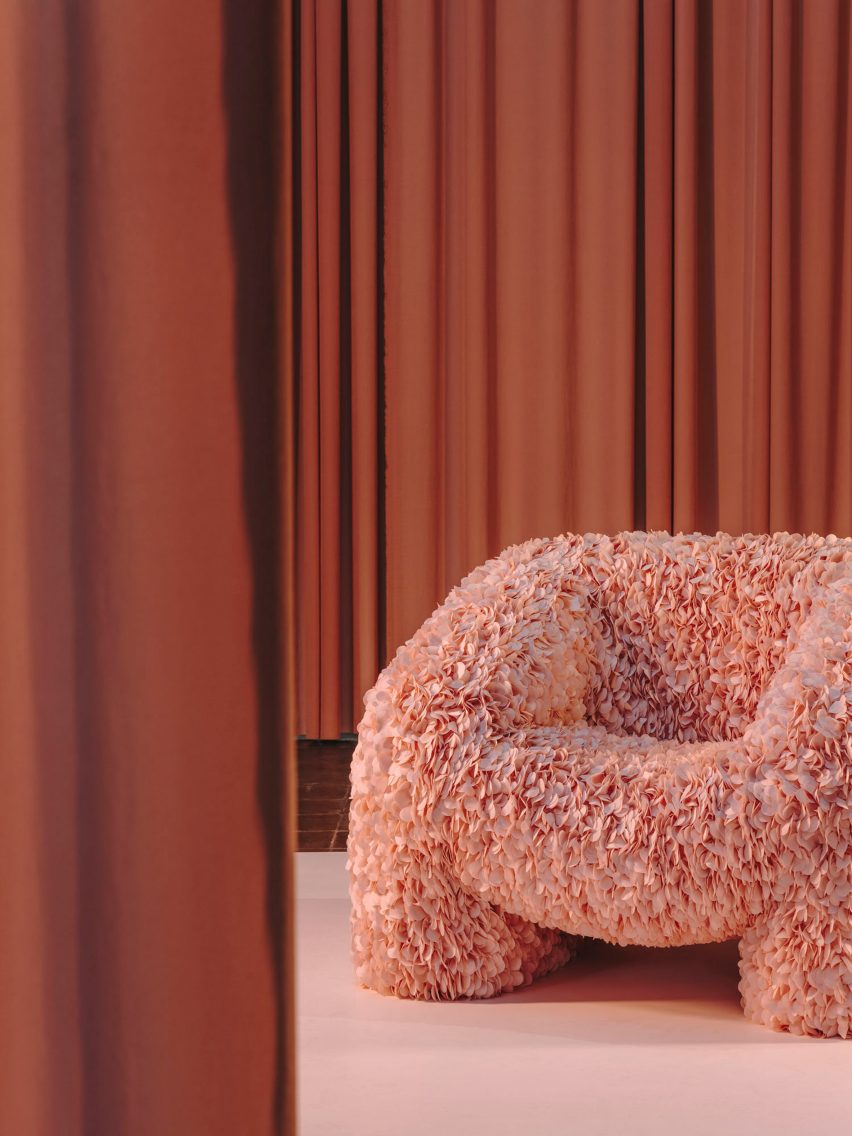
"I think many manufacturers prefer to keep doing what they already know," he continued.
"Nobody wants to lose time and money doing research, but I see the research as a part of the product. And as the majority of my products are strange looking, you always have to find new ways of producing in order to build them correctly."
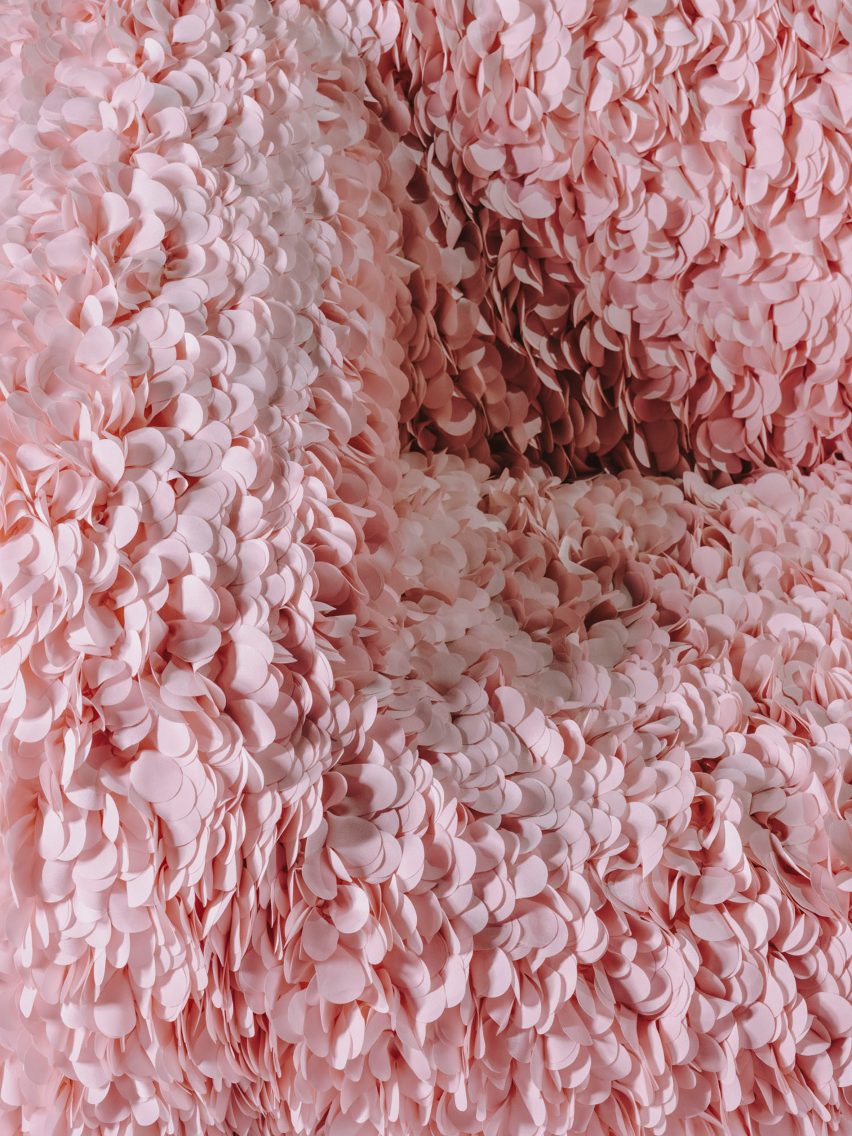
The resulting technique is based on an assemblage of individual modules – long strips of fabric with scalloped edges that are laser cut into pink polyester, before being ruched together into clusters.
Each of these has 40 distinct petals, with the chair made up of around 500 modules.
"The laser cut modules are sewn into a thicker, backing textile to create the upholstery," he explained. "This is then pulled over sculpted, high density foam which is supported by a wooden frame."
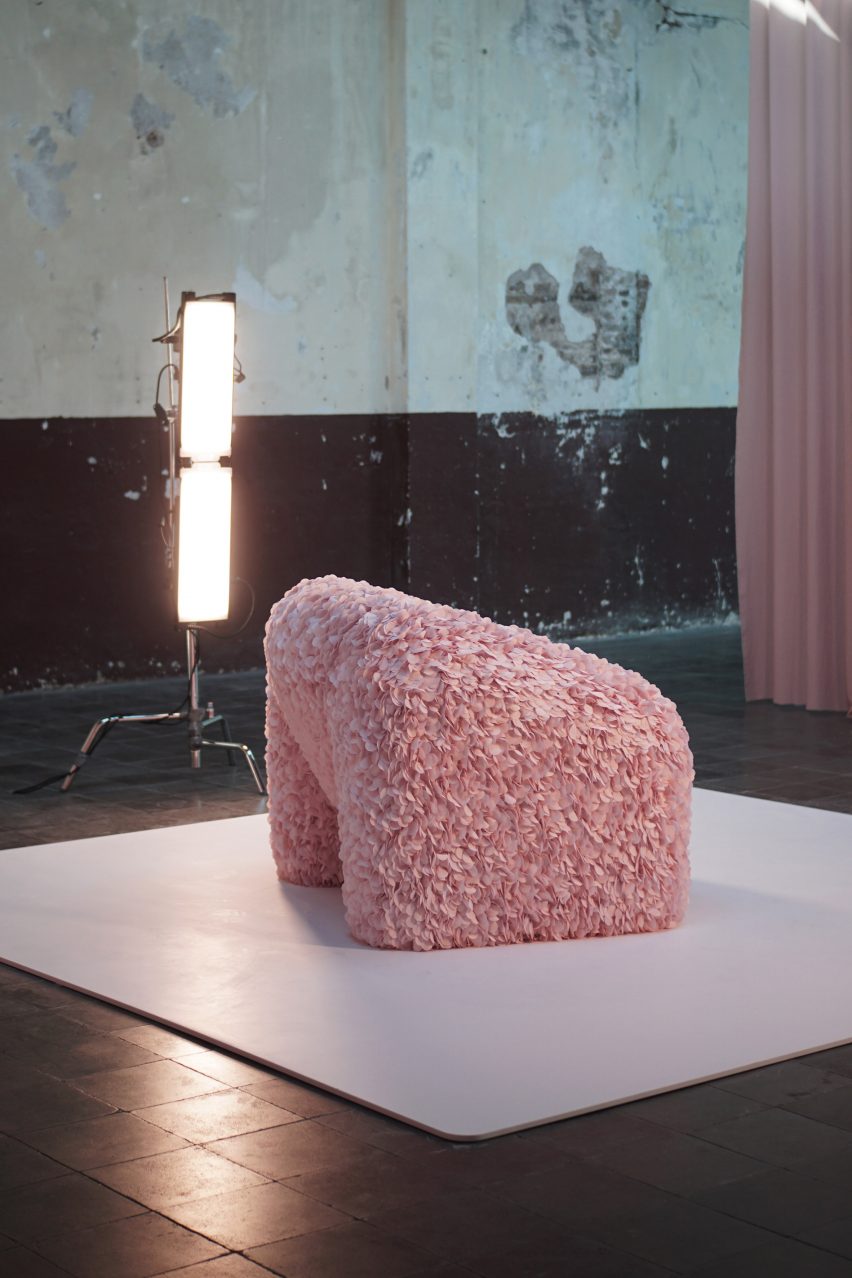
Reisinger believes that letting the act of designing be guided by the process of rendering, rather than simply using the technology to visualise existing ideas, can forge a new kind of approach for designers.
"Working only in the physical world, you are limited by its borders and you begin to think only of objects that can be easily developed," he said. "That is a very common mistake in the market, to avoid any complication of production."
"With 3D tools, there are no limits. They give me the freedom to design whatever I can imagine, without problems of matter or development, and that helps me develop unpredictable processes."
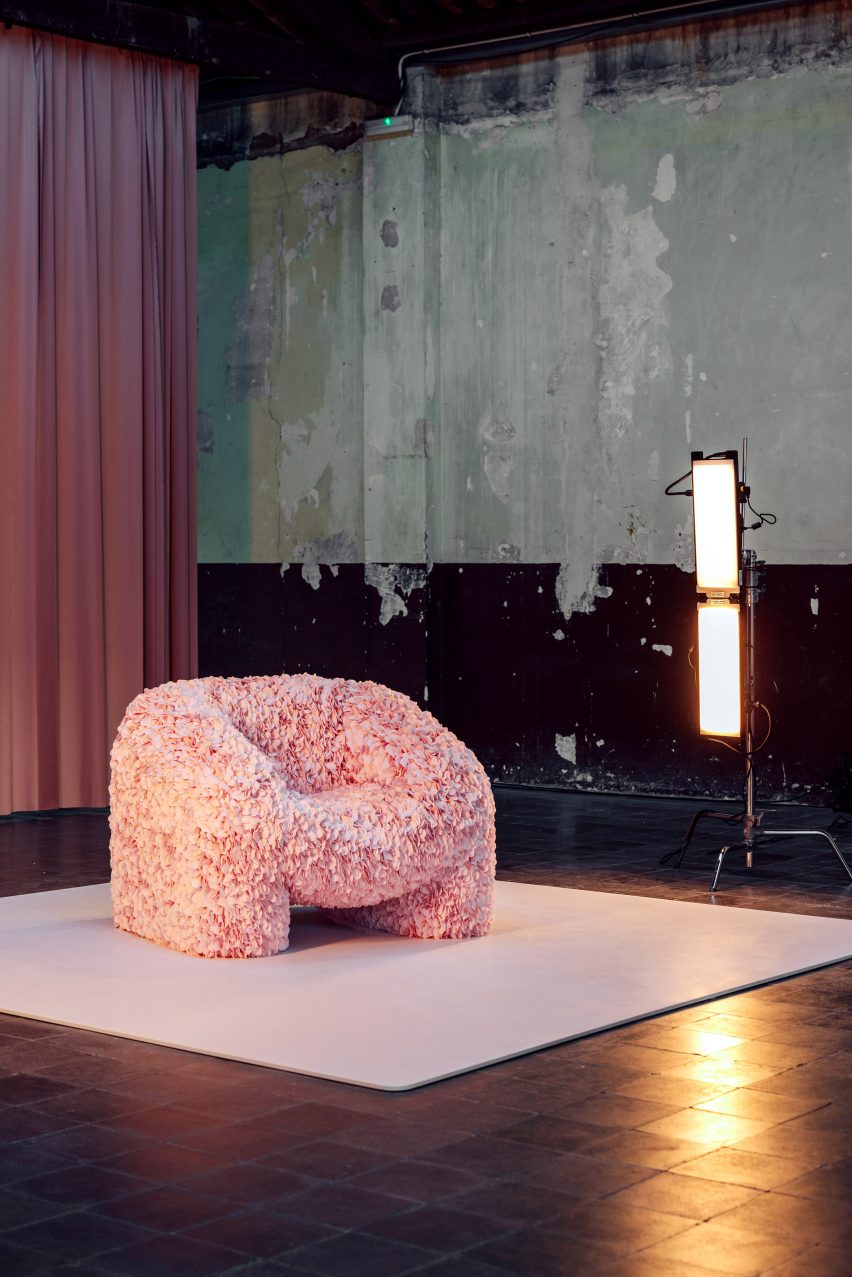
On the other hand, he explained, renders can also help designers do the exact opposite – predicting the outcome of a project before it is actually put into practice.
"You can figure out what you want through trial and error but before wasting materials and resources during the process," he said.
"CGI gives me the ability to test if things will work as expected when using physical material. I can trial how colours, materials and textiles will behave during the upholstery stage or simulate where there might be wrinkles."
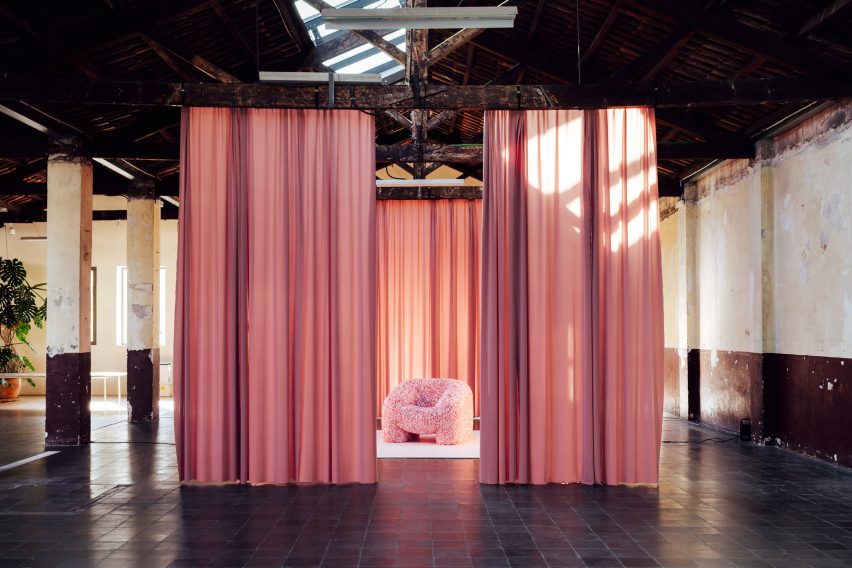
Reisinger is one of a cohort of graphic designers – also including Alexis Christodoulou – that have found an audience on Instagram through sharing immaculate, hyper-stylised renders of surreal interiors and objects.
These images are created almost exclusively for digital consumption, and are rarely translated into real products or spaces.
Some practitioners are less convinced of the technology's potential, with Mexican architect Tatiana Bilbao recently revealing in an interview that the use of renders has been banned in her studio because they can be "dangerous and damaging" to the creative process.